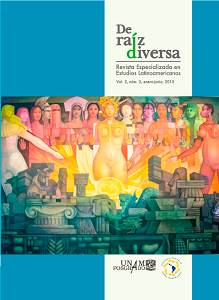La simultaneidad en la historia global
Contenido principal del artículo
Resumen
El trabajo cuestiona que el llamado Mapa de Cuauhtinchan núm. 2, pueda ser analizado, desde el presente y con la carga de valores culturales occidentales, como un mapa en estricto sentido. El propósito de este ensayo es discutir aquellas visiones, como las de Carl Schmitt, que plantean una universalidad de la “apropiación, distribución, y producción” del nomos, apuntando hacia una actitud que apueste por la pluralidad de las formas de representar los distintos espacios tiempos. En este sentido el autor avanza en la manera de proponer distintas categorías que permitan una mejor comprensión de los documentos pictográficos que se produjeron antes y durante la conquista de Mesoamérica y las demás latitudes que fueron colonizadas por los españoles.
Descargas
Detalles del artículo
Citas en Dimensions Service

De Raíz Diversa por Universidad Nacional Autónoma de México se distribuye bajo una Licencia Creative Commons Atribución-NoComercial-SinDerivadas 4.0 Internacional.
